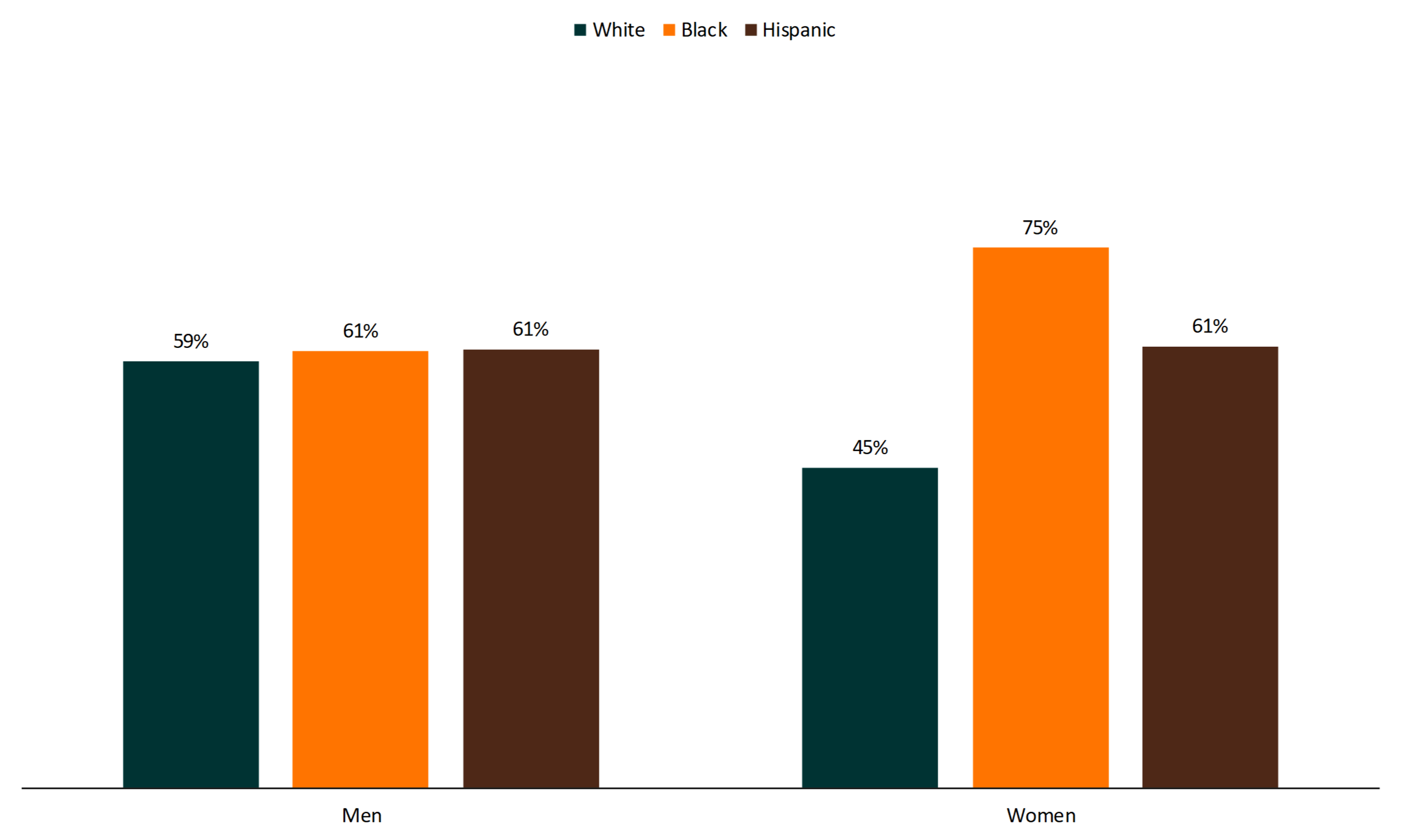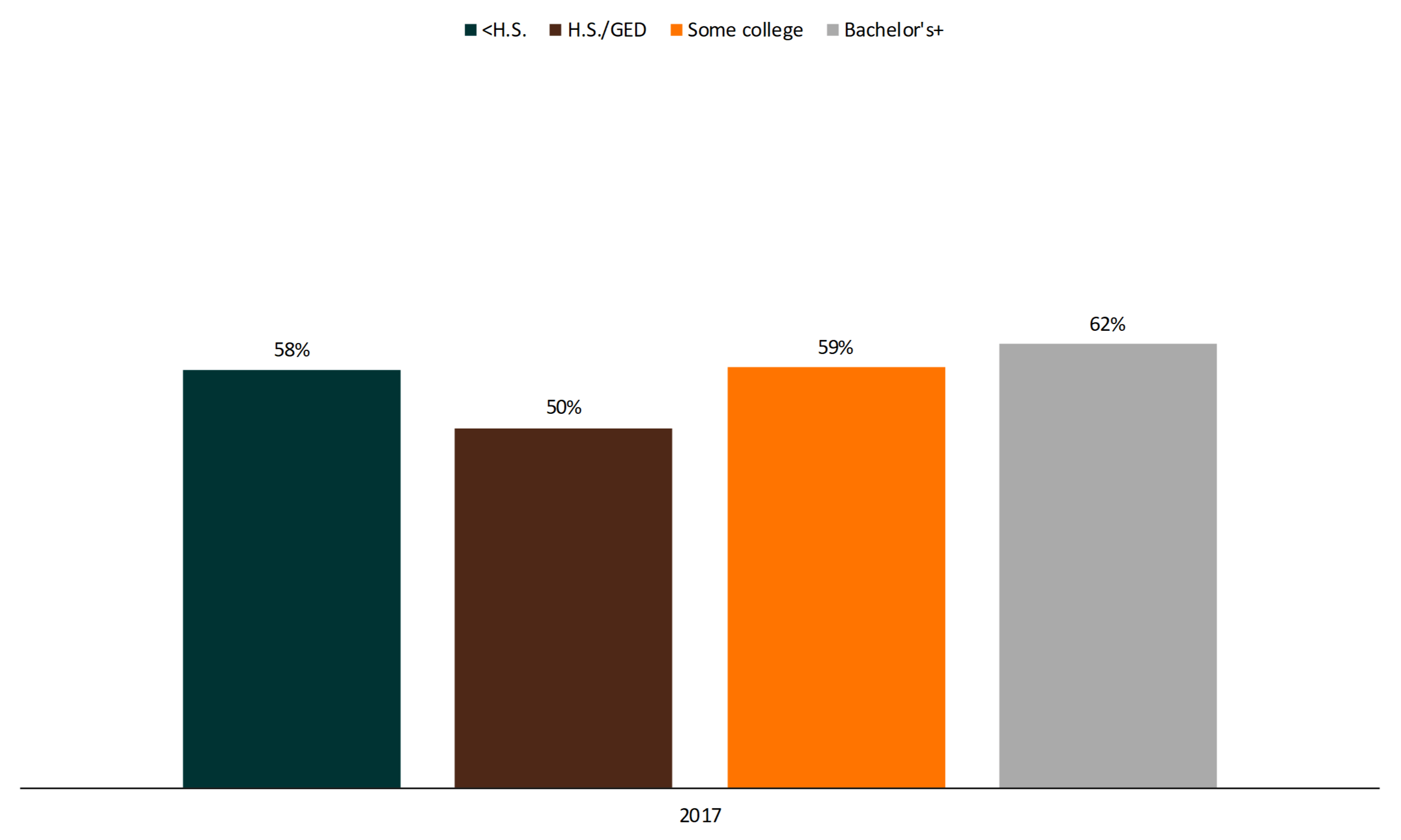High School Seniors’ Ideal Time for Marriage, 2017
Family Profile No. 12, 2019
Author: Colette Allred
Corresponding to the increasing median age at first marriage (Payne, 2019), high school seniors in 2017 expected to marry later in life than high school seniors 40 years ago. However, the rate of increase in the median age at first marriage has outpaced the increase in the share who expect to marry in five years or more (see Figure 1). Using 2017 Monitoring the Future (MTF) data, this profile focuses on high school seniors’ responses to the question “if it were just up to you, what would be the ideal time for you to get married?” We examine variation over time by gender, race/ethnicity, and parental educational attainment. This is an update of prior NCFMR analyses of 2014 MTF data (FP-16-15) and is the third in a three-part series analyzing high school seniors’ attitudes toward and expectations regarding cohabitation and marriage.
High School Seniors Expecting to Marry Over Five Years from Now and Median Age at First Marriage Over Time
- The share of high school seniors expecting to marry more than five years from now has doubled since 1976. In 2017, 6 in 10 seniors reported expecting to marry over five years from now compared to only 3 in 10 in 1976.
- The median age at first marriage also increased over time. Among women, it increased by six years over the past four decades, from age 21 in 1976 to 27 in 2017. Men (not shown) have a similar trend, but their average age is generally two years greater than that of women at any given time.
Figure 1. High School Seniors Expecting to Marry Over Five Years from Now and Median Age at First Marriage, 1976-2017

Source: NCFMR analyses of Monitoring the Future, 1976-2017; U.S. Census Bureau, Current Population Survey, 1976-2017
High School Seniors Expecting to Marry Over Five Years from Now by Gender and Race & Ethnicity
- The share of young men expecting to marry over five years from now was consistent among racial/ethnic categories at nearly 6 in 10.
- In contrast, reported ideal timing of marriage varied greatly by racial/ethnic category for young women. The share of women who reported expecting to marry in more than five years was lowest among young White women (45%) and highest among young Black women (75%). Young Hispanic women were in the middle, with a share similar to that of young men (61%).
Figure 2. High School Seniors Expecting to Marry Over Five Years from Now by Gender and Race/Ethnicity, 2017

Source: NCFMR analyses of Monitoring the Future, 2017
High School Seniors Expecting to Marry Over Five Years from Now by Parental Educational Attainment
- The highest share of high school students who reported expecting to marry in more than five years was observed among those whose parents had at least a bachelor’s degree (62%).
- The lowest share was observed among high school seniors whose parents completed high school or earned a GED, but did not attend college (50%).
Figure 3. High School Seniors Expecting to Marry Over Five Years from Now by Parental Educational Attainment, 2017

Source: NCFMR analyses of Monitoring the Future, 2017
References
- Payne, K. K. (2019). Median age at first marriage, 2017. Family Profiles, FP-19-06. Bowling Green, OH: National Center for Family & Marriage Research. https://doi.org/10.25035/ncfmr/fp-19-06
Suggested Citation
- Allred, C. (2019). High school seniors’ ideal time to marry, 2017. Family Profiles, FP-19-12. Bowling Green, OH: National Center for Family & Marriage Research. https://doi.org/10.25035/ncfmr/fp-19-12.
Updated: 11/07/2025 02:38PM


